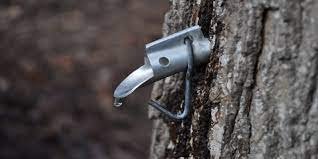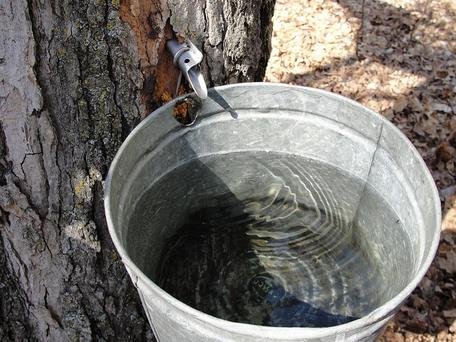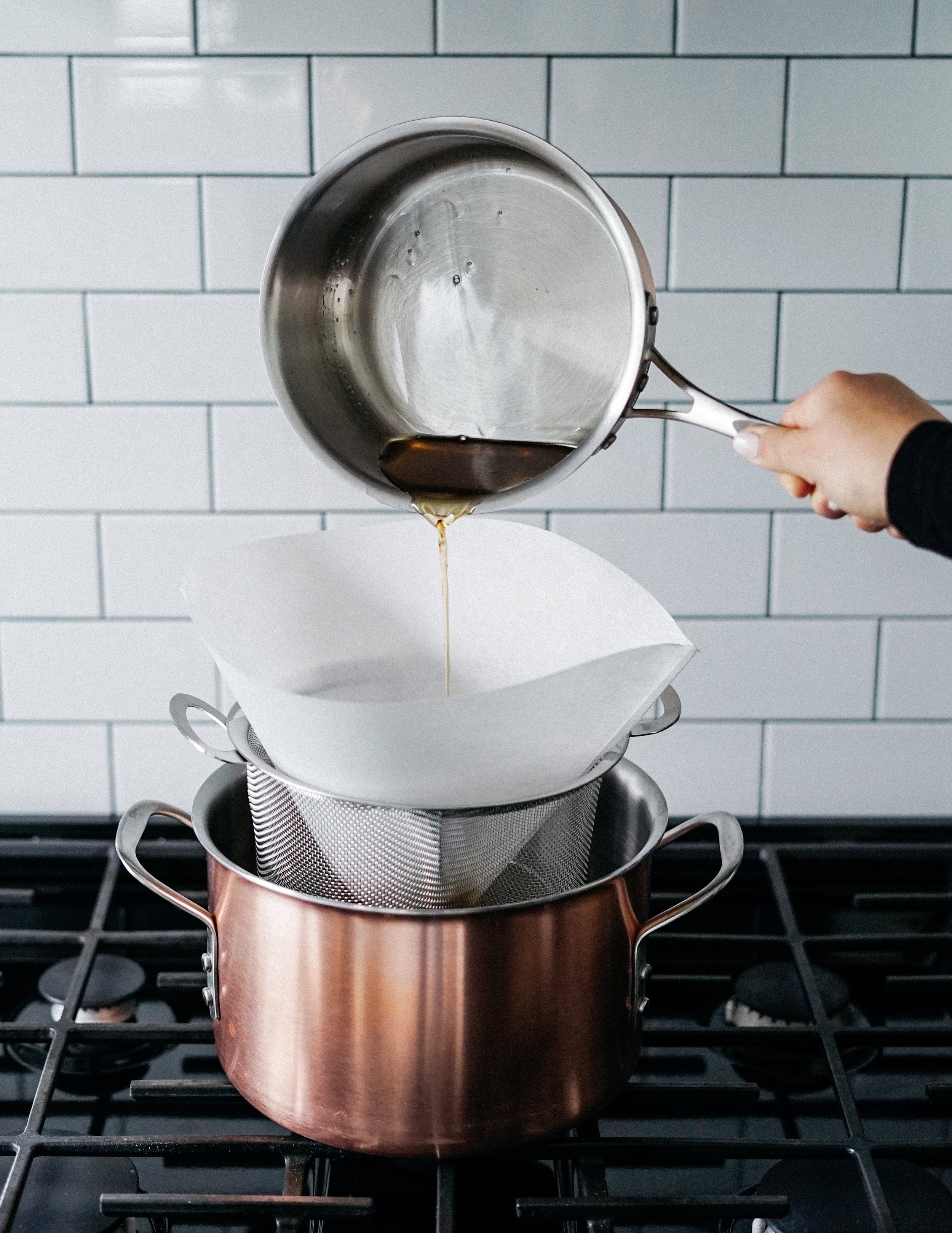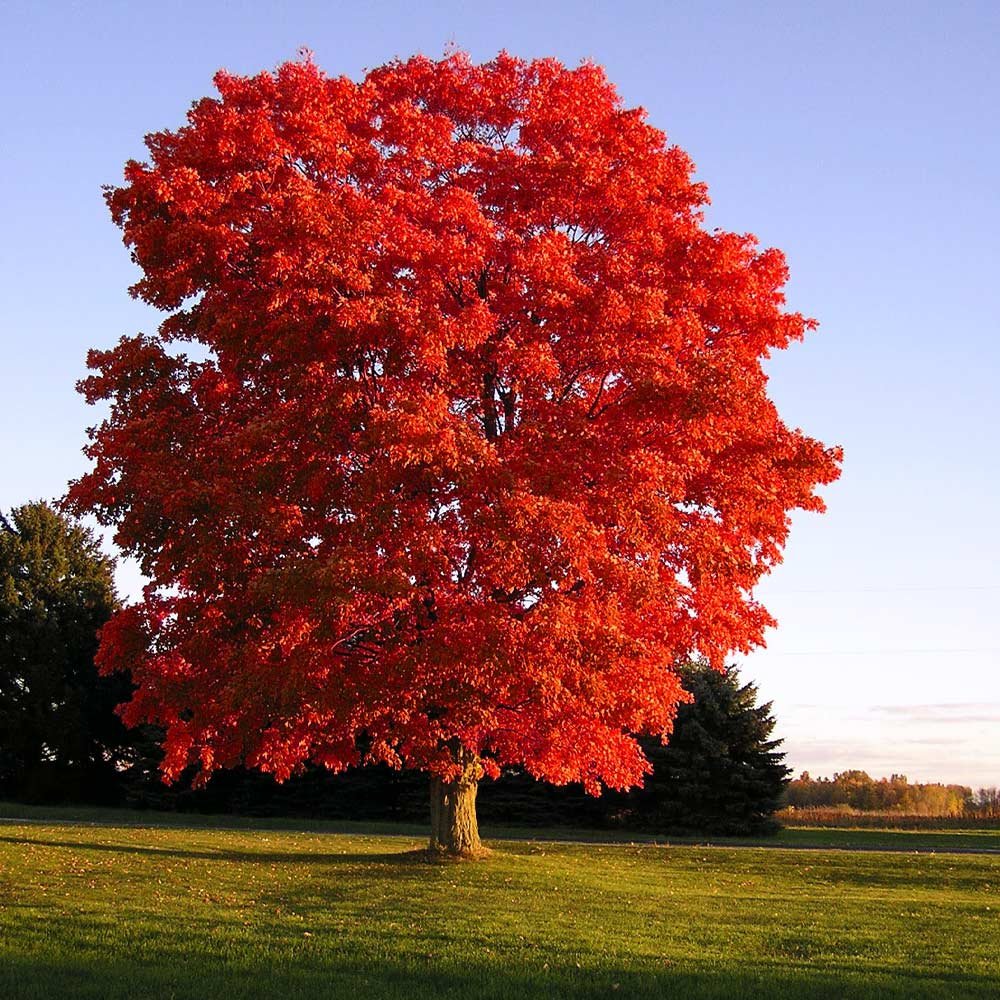The Process
To make maple syrup, you will need to tap maple trees during the early spring when the sap is flowing. Collect the sap and boil it down to evaporate the water content, leaving behind the concentrated syrup. It takes about 40 parts sap to make 1 part syrup. The process can take several hours and requires patience, but the end result is delicious and satisfying!
Below are detailed steps with links to our favorite products to get the job done!
Preparation
In order to prepare for making your very own maple syrup, you need to gather some equipment
(or make sure your existing equipment is good and clean from the previous season).
Some of the things you’ll need are:
You’ll need to wait to tap your trees until the end of winter when the temperatures are below freezing at night and above freezing during the day.
Make sure to sterilize the bottles or jars you’ll store the syrup in ahead of time so they are ready to go.
Setup and tapping
Selecting the right trees for tapping is important; you want a healthy tree at least 10-12 inches in diameter.
When you’ve reached the time of the winter where the temperature is right for sap flow, drill a hole about two inches deep at a slight upward angle into the trunk of the tree, about three feet above the ground. Next, insert a tap into the hole. Gently tap it with a rubber mallet or a wooden mallet (a metal hammer will damage the spout). Hang a bucket with a cover or collection bag from the tap to collect the sap.
Don’t tap the trees too early as this can cause sap to freeze inside of the tap and damage the equipment.
Sap Collection
The time it takes to collect sap can vary based on weather conditions and the size of the tree. It typically takes between a few hours and a few days to collect enough sap to turn into maple syrup. Only food grade containers should be used to collect sap.
Based on personal preference you can either use buckets to collect your sap or sap sacks. The sap sacks are a cheaper upfront investment, however, the buckets hold up against wear and tear and last much longer.
One taphole can produce anywhere from 1 quart to 1 gallon per flow period.
Filter the sap through a mesh filter before storing to remove debris and insects.
Store collected sap either in a refrigerator or in a location that maintains about 38 degrees Fahrenheit like a basement, garage, barn or snow bank. It's important to keep the sap cold to prevent bacterial growth and maintain its quality.
Boiling
Boiling the sap evaporates the water and increases the sugar concentration in order to turn it into maple syrup.
Set up your boiling pan in a safe place as it will be on the flame for several hours.
Start out with a few gallons on medium high heat until it begins to boil. You may have to adjust the temperature in order to maintain the a rolling boil without too many bubbles or foam on the surface. Stir it frequently with a wooden stirring paddle to prevent it from burning.
Occasionally, skim any foam off the top; this prevents cloudiness in your final product.
After a few hours you’ll notice the sap is thicker and has reduced to about ⅓ its original volume.
Now you’re ready for the finishing boil!
Finishing, Filtering & Bottling
If you have done your initial boil outside, it’s time to move indoors. This part of the boiling process requires much more careful monitoring to ensure that the syrup reaches the right temperature without boiling over or burning.
Continue boiling until the temperature reaches 219 degrees Fahrenheit (or 7 degrees above the boiling point of water where you live). Use a candy thermometer to check and monitor the temperature.
Using a pipette, drip a few drops of the syrup into your refractometer to check the sugar concentration. Once the sugar content reaches between 66.9% and 68.9%, the syrup is done.
Layer your two prefilters inside your filter and place them inside a food safe container. Pour the hot syrup, at least 180 degrees, into the filters. If the inside prefilter becomes clogged, pull it out and pour the syrup through the second prefilter.
(the prefilters and filters can be cleaned and reused so don’t throw them out!)
As long as the syrup was at least 180 degrees it does not need to be reheated before bottling. Leaving ¼ inch headroom, fill the bottle or jar and secure the lid. Allow it to cool and store it up right for up to two years.
Once opened, it can be stored refrigerated for up to one year.
End of the Season
When the temperatures remains above freezing during the day and overnight, or the tree begins to bud, it is time to stop collecting sap.
If you haven’t already, pull the taps from your trees. The tap hole will heal itself over the summer.
Clean your evaporating pan with a 50/50 premixed solution of water and 5% vinegar. Pour the mixed solution into the pan and scrub gently. You can also boil the mixture and scrub the pan once it is boiling. Either way, allow the mixture to soak in the pan for up to one day, scrub clean and rinse.
Pre-rinse your buckets and containers to remove any debris. Place them in a boiling water bath in your evaporating pan for a few minutes and then scrub any remaining residue left on the surface of the bucket.
Rinse filters and hang them to dry.
Thoroughly clean your taps, thermometer, and any other used equipment. Allow them to completely air dry before storing for the next season.
When cleaning your equipment, do not use any abrasive cleaners, detergents or harsh chemicals.






